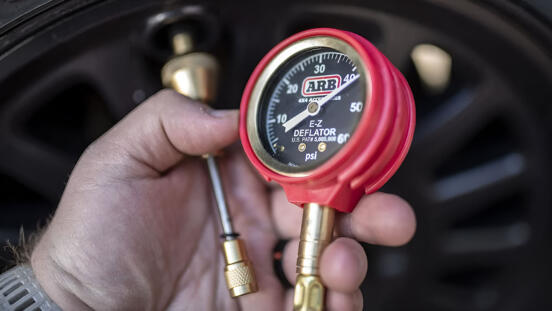![]() Image credit: Silicon Valley MC
Image credit: Silicon Valley MC
Running larger fridges, freezers, camp lights, and more appliances off your 4x4s second battery, the load can be more than a single solar panel can handle.
When connecting multiple panels, you have to decide between wiring them in series for double the voltage, or parallel for double the current, so which is better?
If you’re not yet familiar with this, you can see in the basic diagram below how it works.

Parallel vs series
For the sake example, we’ll pretend we have 2 solar panels which, in peak sunny conditions, output 20 volts and 10 amps each; blue for solar panels, and grey boxes for your solar regulator.
When wired in “parallel”, the positive wire from both panels connects to the controller’s PV (panel voltage) positive terminal, and both negative wires to its PV negative terminal. This combines the amp output of the panels giving you 20V x 20A for 400 watts of power.
When wired in “series”, the positive wire of 1 panel is connected to the negative wire of the other, with the remaining positive and negative wires connecting to the solar controller. Wiring 2 panels in series combines the voltage, giving you 40V x 10A, again for 400 watts of power.
In theory, at least. So if the power output is ultimately the same, why does it matter which one you choose?
This is a subject of much debate, and a lot of theoretical situations get thrown around to support one setup or the other, but from personal experience and testing, I would make the case that parallel is the better solution for camping and off-roading. Here’s why…
In ideal conditions, both will perform almost identically. By “ideal” I mean panels laid flats, the sun directly overhead, with no clouds or shade passing over the panels. In reality, though, this is rarely the situation when camping.
The case for series:
To charge your battery, the voltage generated by your solar needs to be significantly higher than the battery voltage – for example, most “12v batteries” require an actual charging voltage of somewhere around 14.4v – and once the panel voltage drops below the battery voltage, it can no longer charge it.
By wiring your panels in series, you can maintain a high enough voltage to charge your battery in lower light conditions than parallel. In practice, this means the panels will generate charge earlier in the morning as the sun rises, and later into the evening as the sun sets.
Because two panels wired in parallel double the amperage, but not the voltage, they will stop charging your battery earlier in these dim light periods.
So why do I make the case for parallel?
The problem with panels wired in series is they are extremely intolerant of any shade. On a 2-meter square panel, something as simple as a large leaf can cause your power input to dive by 10%-20%. More shade, more of a drop.
 Image credit: Venergy Solar
Image credit: Venergy Solar
By just holding a single hand over a panel to create a shadow, you will see the power drop dramatically.
When camping and traveling off-road, shadows from a tree branch, dirt, dust, bird dropping, passing clouds, etc. all contribute to this reduction in power.
Solar panels wired in parallel are also affected by shade, but not to as severe an extent as panels wired in series.
Real-world testing
In my off-grid setup, I currently run two identical 200-watt solar blankets. On sunny days when not using a lot of power, I lay out one blanket, on overcast or hot days when running the fridges harder, I connect the second blanket for additional power.
Below you can see the real-world power generation of these in parallel (left) and series (right), measured on one of my Victron MPPT solar controllers. The tests were performed in the same conditions, just minutes apart. All that was changed was the adapter between the blankets to switch them between parallel and series.

As you can see, the amps (current) and voltage are combined as expected for the respective setups, as explained in the earlier diagram, but the total amount of power output is lower from the panels wired in series.
Seemingly minor influences like mild overcast weather, a few stray leaves, or dirt, make a dramatic difference to the power output.
The above is just from one test, but I’ve replicated the same results many times, on many different trips in summer, winter, open areas, and sheltered forests. Parallel is consistently better, to the point where I disposed of my series wiring adapter as no longer being useful.
Why ever wire panels in series then?
Wiring panels in series has its applications; if you had an off-grid power cabin in an open area with no trees, antennas, or other obstructions to cast a shadow over your panels, the advantage of series producing more power around dusk and dawn may very well make it the better setup for the situation.
For camping, however, things are never this consistent. Unless you’re camping exclusively in the desert, where you will always have full sunlight without any possibility of shade obstructing the panels, in my experience parallel will regularly be the better performer.
If you want to test for your situations specifically, this can be done relatively cheaply with a few Anderson plugs and extra wiring, but I’m confident you’ll find the same.
Read section again:
Parallel vs series
The case for series
The case for parallel
Real-world testing
# Series vs parallel solar panels, best multiple solar panel setup for 4×4, parallel vs series solar for off-grid camping.






